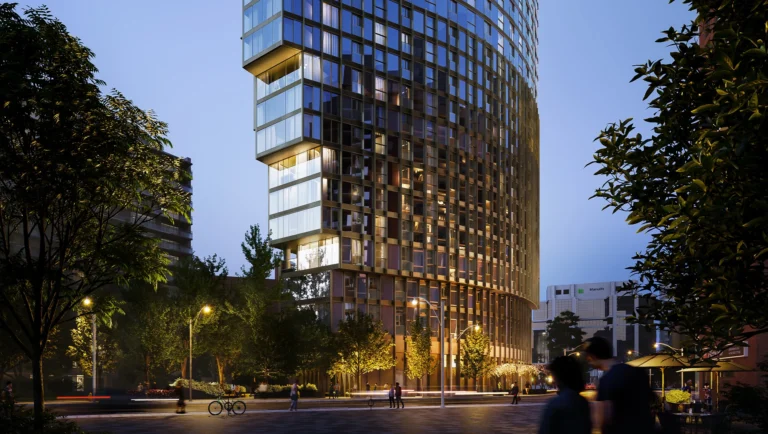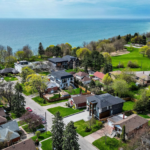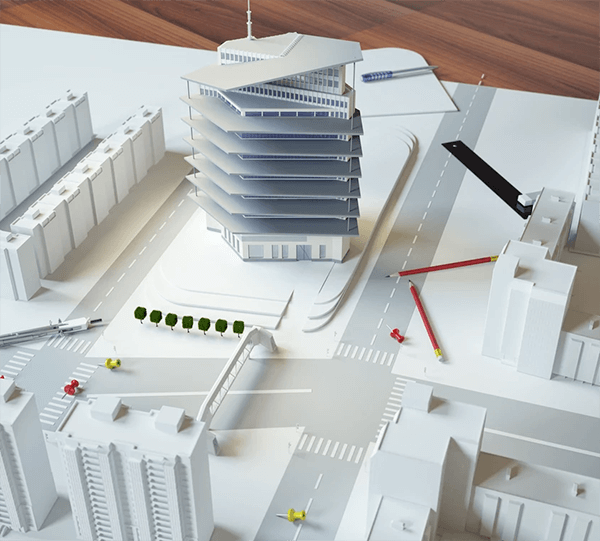Cranes still crowd the GTA skyline, but the rhythm has changed. After a decade of nonstop building and bidding wars, the condo market has slowed — not collapsed but corrected.
Developers are offering incentives they once swore they’d never need. Buyers, for the first time in years, are walking into negotiations with the upper hand. And while headlines focus on the current oversupply, a quieter shift is already forming beneath it — one that could flip the market again by 2027, when years of underbuilding collide with record population growth.
What feels like weakness today may prove to be the foundation for the next market upswing.
1. The Buyer’s Market That 2025 Built
The GTA condo market hasn’t fallen apart — it’s recalibrated.
At about $655,231, the average resale condo price is now 11% below its 2022 peak, wiping out much of the appreciation gained in recent years.
A record of 31,000 new units are scheduled for completion this year, and nearly 24,000 remain unsold. The result: more listings, slower sales, and developers willing to negotiate in ways they haven’t for years.
To keep projects moving, many builders are introducing incentives that were unthinkable during the boom years — incentives that meaningfully shift a buyer’s carrying costs and cash flow:
- Mortgage Top-Ups or Rental Guarantees
Some developers are covering part of carrying costs for the first one to two years — either through direct mortgage subsidies or rental guarantees. It’s a short-term cushion designed to offset the impact of higher interest rates.
- Low Deposit Structures
Instead of the traditional 15–20 % deposit, several projects now allow buyers to secure a unit with as little as 5% until occupancy. That smaller upfront commitment improves liquidity and eases pressure on cash flow while the property is under construction.
- Cash-Back on Closing
Other developers are offering direct price reductions or cash incentives at closing, effectively lowering the total purchase cost. In a market where margins matter, those savings can be meaningful.
Actionable Tip for 2025
Focus your search on units closing soon — between Q4 2025 and Q1 2026. These projects often carry the most aggressive incentives, such as mortgage top-ups or rental guarantees, which can help neutralize the negative cash-flow challenges investors face in today’s high-rate environment.
For the first time in a decade, negotiation has re-entered the conversation in a meaningful way.
2. After the Crisis: The Inescapable Supply Cliff Ahead (2027–2031)
The current oversupply is temporary. It’s the final echo of a building cycle fueled by low borrowing costs and aggressive demand. What’s forming now is the opposite — a supply drought that’s already reshaping project pipelines.
A Historic Production Drought
New pre-construction sales have plummeted to their lowest quarterly level since 1995 (Q1 2025). Developers can’t secure construction financing unless roughly 70% of units are pre-sold, but current absorption rates hover around 40%. That gap has already forced multiple projects into delay or cancellation, shrinking the pipeline of future housing starts.
The Completion Drop-Off
The 31,000 condo completions arriving in 2025 are the result of sales made years ago. Because those sales have since cratered, the pipeline will run dry just two years from now. Forecasts show completions plunging from 31,000 units in 2025 to roughly 17,500 by 2027 — a drop of nearly 45%.
Demand Will Swell
Meanwhile, the region’s population keeps rising. Immigration targets remain high, and household formation continues to outpace new construction. Even with economic headwinds, demographic demand in the GTA remains among the strongest in North America. When the flow of new supply slows after 2027, that pent-up demand will press against a near-zero pipeline of new inventory — a setup that almost guarantees upward price pressure.
Investor Insight
“The lack of new inventory, combined with the natural absorption of current listings, could tighten the resale market again and help support price appreciation in the next 2–5 years.”
That’s the foundation of the long-term thesis for buying the dip today. Rather than a crisis, 2025 marks the reset before the rebound — a rare window where long-term buyers can position themselves ahead of the coming shortage.
3. The Shadow Inventory: Where the Real Opportunities Hide
The best deals in this market aren’t on MLS. They live inside what industry insiders call the Shadow Inventory — properties owned by sellers who must move, and quickly. These are quiet listings, assignments, and near-complete developments where urgency, not marketing, drives the sales.
These are the corners of the market where urgency creates opportunity — and where timing matters more than listings.
| Strategy | Target | Why It Works Now |
| Assignment Sales | Investors who bought pre-construction at peak prices (2021–2022) and are closing in 2025/2026. | These sellers are highly motivated to exit contracts due to financing challenges — low appraisals, high rates, and tighter lending. Buyers can negotiate prices that reflect today’s corrected values rather than the inflated costs of the boom era. |
| Freshly Completed Resales | Newly finished units (1–2 years old) from original owners or investors listing right after closing. | Appraisals are coming in low, carrying costs are high, and liquidity is thin. Sellers without cash reserves are under pressure and often accept lower offers to close quickly. |
| Late-Stage Pre-Construction | Remaining units in successful projects nearing completion in late 2025 or early 2026. | Developers are eager to clear the final inventory to finalize financing. These units frequently come with the deepest incentives — cash-back offers, rent guarantees, or reduced deposits — that weren’t available to early buyers. |
The Shadow Inventory represents the part of the market driven not by listings, but by circumstances — where financing pressures, timing, and opportunity quietly converge.
Focus on transit-connected areas such as the Downtown Core, Midtown, and the Yonge corridor, where rental demand and resale recovery typically happen first.
4. The Negotiation Edge in 2025
In a market that’s finally on buyers’ side, negotiation isn’t a side note — it’s the strategy.
The average sold price of a resale condo in Q1 2025 was $689,000, while average asking prices hovered closer to $806,000 per square foot. That gap isn’t small; it’s leverage.
- Demand a price that cash-flows.
At current interest rates, most condos are slightly cash-flow negative. Use that math to your advantage. Present a realistic cash-flow breakdown and negotiate a price that minimizes or eliminates your monthly loss — one where rent roughly covers the mortgage and fees. - Focus on quality and transit.
Recovery won’t be even. Transit-rich neighborhoods and well-built projects will lead to the rebound. Smaller units in high-demand areas tend to outperform larger ones in peripheral markets. - Stress-test your financing.
Prices may drift lower through 2025 before stabilizing in 2026. Keep reserves for 12 to 18 months of potential negative cash flow or vacancy. Liquidity and patience are your real leverage points.
The buyers who succeed now are the ones reading the numbers, not the headlines.
The Bottom Line: The Setup for 2027
The GTA’s condo slowdown isn’t the disaster the headlines suggest. It’s a breathing space — one that gives buyers time, leverage, and choice.
Today’s oversupply is temporary; the coming supply cliff will not be. As projects stall and demand keeps rising, this lull could mark the start of the next growth cycle.
For buyers with patience and perspective, the next cycle may already be underway.












